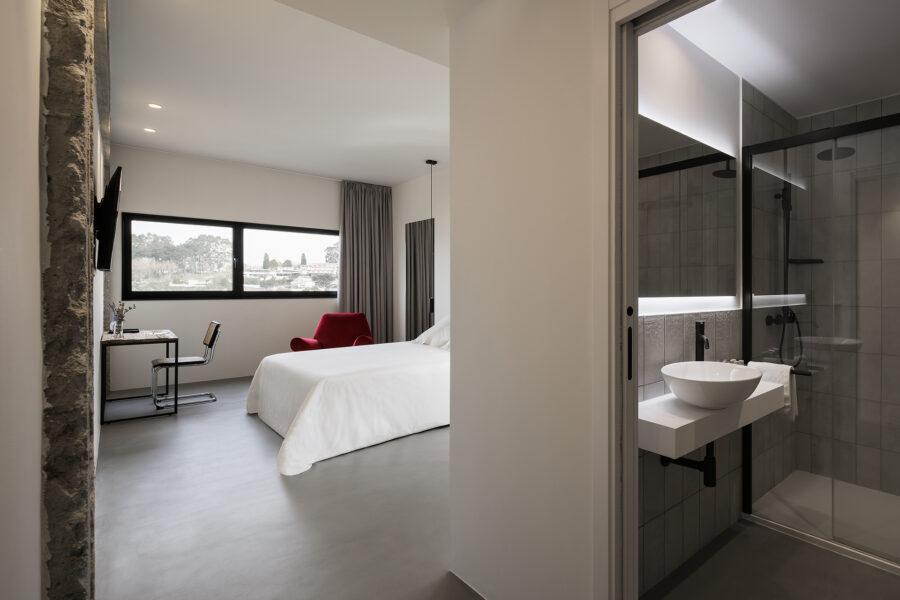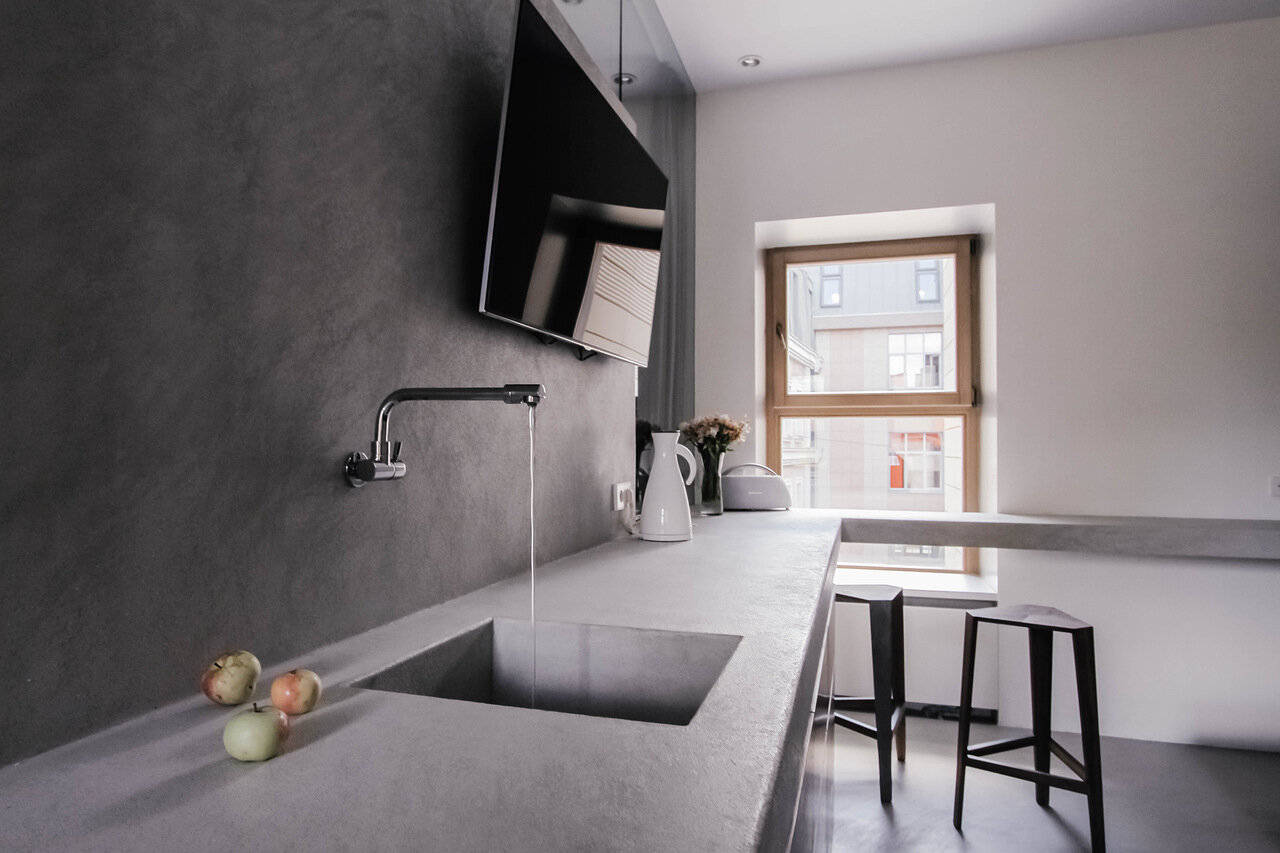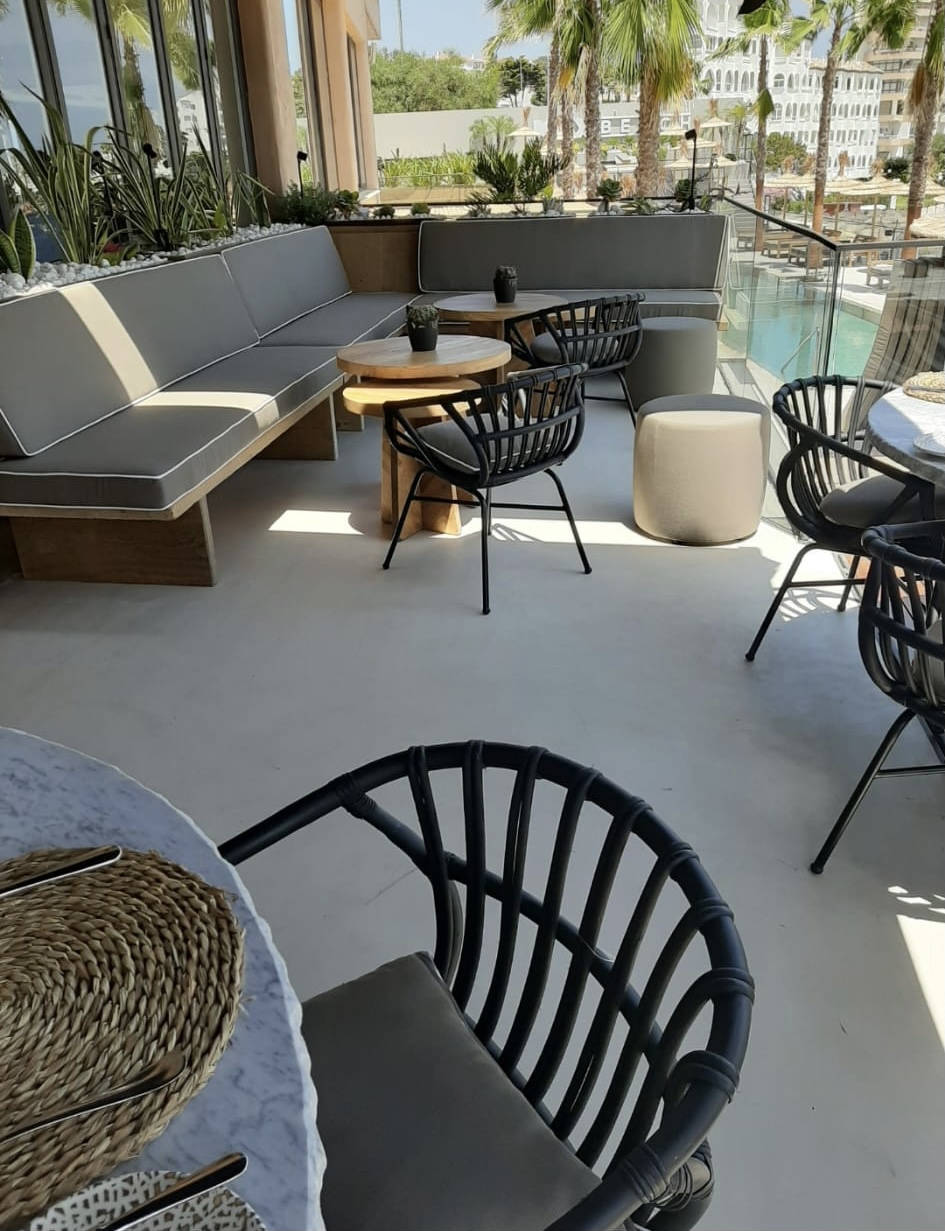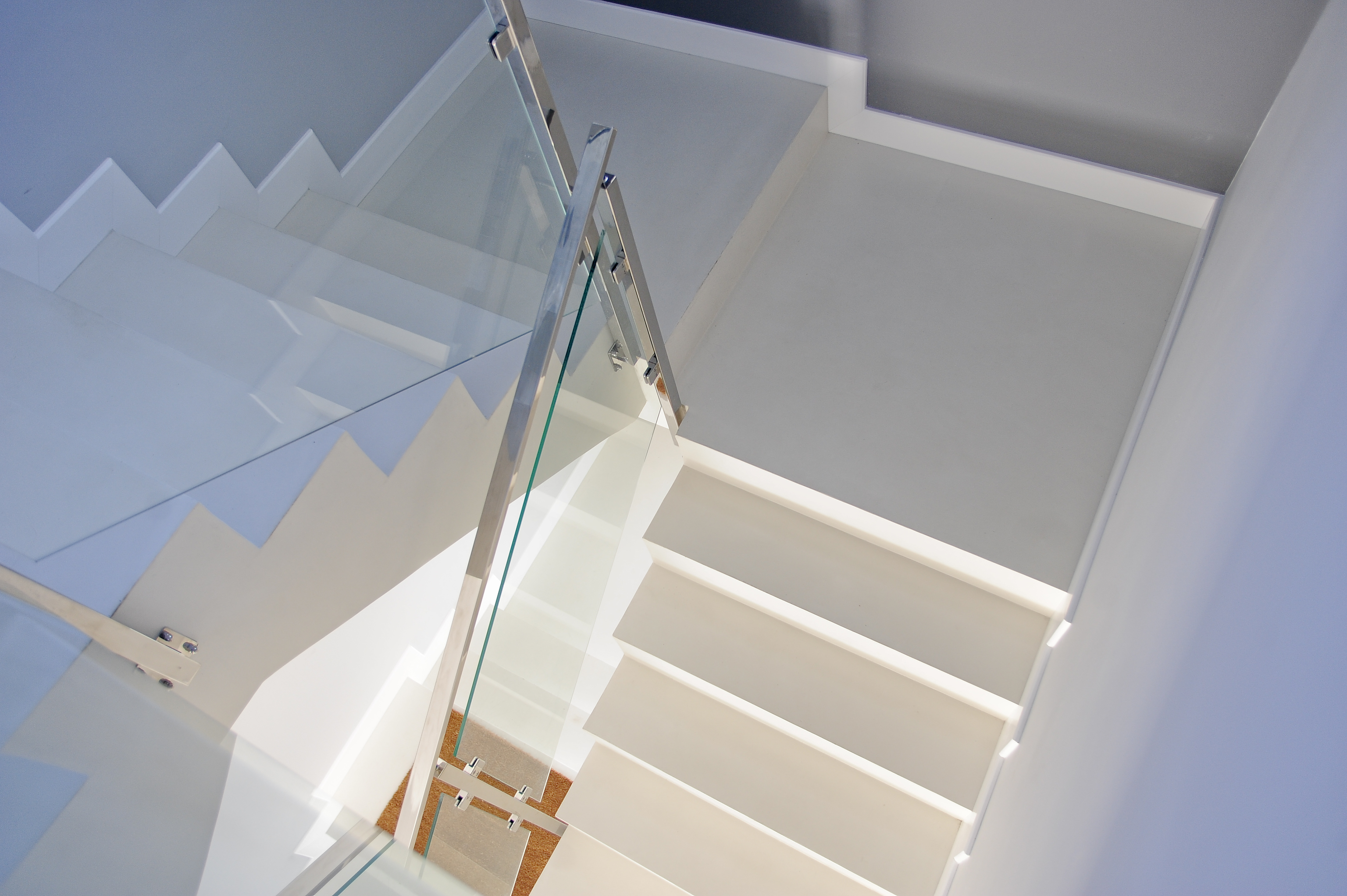Opiniones del microconcreto: problemas y ventajas a considerar
El microconcreto it is a coating whose popularity has skyrocketed in recent years in interior and exterior decoration. A coating that has become a real trend in the renovation of homes and businesses due to the advantages it offers.
A construction material whose application is only reserved for an experienced professional. Otherwise, mistakes can be made in the installation that end up degenerating into microcement problems. That's why there are all kinds of opinions about this coating.
In this article we are going to analyze the main pros and cons of this continuous coating, whose decorative solutions are very varied, to clarify and resolve all the doubts that may arise around it.

Un recubrimiento llamado microcemento: qué es
El microcemento o micromortero es un material que permite una renovación rápida de los espacios sin construcción ni juntas. El rey de los revestimientos continuos para muchos debido a la variedad de aplicaciones que permite y a un método artesanal único.
A coating of excellent adherence that fits any surface as if it were its second skin, transferring only 3 millimeters of thickness. A layer practically imperceptible and insufficient to affect the structural load of the support.
En cuanto a su composición, el microcemento está formulado con una base de cemento, pigmentos minerales, resinas y aditivos. Un material que levanta pasiones, pero que al mismo tiempo motiva dudas - la gran mayoría por desconocimiento del producto - acerca de sus problemas derivados.
El microcemento provoca opiniones para todos los gustos
Its attractive and multifaceted aesthetics and its good mechanical and chemical resistances are the main characteristics that respond to the positive evaluations and opinions of microcement. But there are also those who are not entirely convinced by this coating due to the discredit they attribute to it for cracks, crevices, and dampness.
You can't please everyone, that's clear. In this article we are going to delve into the most relevant benefits of this material as well as the most common "problems" with microcement that can be avoided with some simple tips.

Problemas del microconcreto más comunes
It should be noted that if quality material is used and the application is carried out by a professional, the microcement will not present cons. And it is that the appearance of fissures, cracks, marks and stains, the problems that most concern about smoothed microcement, are mainly due to failures in fundamental steps of the application of microcement or the poor condition of the support that serves as the base of the new coating.
Cometer errores en la aplicación del microcemento
The application of microcement has very marked steps. Altering the order or making mistakes in the process, especially in the priming and sealing, will automatically lead to an undesired result. Hence the insistence that the installation of smoothed microcement must be carried out by a professional applicator. We describe below the most common mistakes when applying microcement.
1. Apply microcement with a temperature too low or high
The ideal ambient temperature to apply microcement is between 15ºC and 25ºC. If the coating installation is done at a temperature below 15ºC or above 25ºC, problems may arise.
Si la temperatura es demasiado baja, un factor que sucede en la temporada de invierno, la superficie cubierta con microcemento puede tardar mucho tiempo en endurecer correctamente. Por otro lado, si la temperatura es demasiado alta sucede justo lo contrario, el microcemento se endurecería demasiado rápido.
2. Mezclar mal el pigmento de microcemento
Pigmenting the microcement properly is key. If the instructions are not carefully followed there may be an excess of groups that cause dark streaks on the surface coated with microcement.
Para obtener la gran variedad de colores de microcemento del catálogo Topciment, hay que respetar la dosificación indicada en cada etiqueta tanto para la cantidad como para el tipo de microcemento empleado.
You will also have to vigorously shake the pigment until you achieve a homogeneous liquid without irregularities. Then pour a little of this kneading liquid, into a container, add all of the pigment and mix thoroughly. Then gradually add the microcement and the rest of the kneading liquid in the same container until you achieve the required viscosity for each application and a homogeneous microcement color.
3. No seguir los pasos al instalar microcemento
La aplicación del microcemento requiere de unos pasos que hay que seguir al pie de la letra. No respetarlos puede resultar fatal para el acabado final.
La instalación del microcemento en pisos o paredes, por ejemplo, no es la misma. Ya que varía el tipo de microcemento alisado que hay que aplicar. Del mismo modo no acondicionar y nivelar la base existente que se va a revestir, puede provocar futuros problemas importantes.
As you also can't make mistakes in the priming of the support or in its sealing. En esta página,encontrarás todo lo que necesitas saber para no cometer errores en la aplicación de microcemento

Reparación incorrecta de una superficie de microconcreto
Cuando es necesario reparar el microcemento por alguno de los errores previamente descritos o, al usar un material de mala calidad se han generado astillamientos por los golpes, se debe reparar correctamente.
Since it is a continuous pavement, without joints, to repair the smoothed microcement correctly, it must be done by areas that are large so that the contrast is not too noticeable and the final finish ends up being a disaster.
Fisuras y grietas del microcemento
Si el microcemento es un recubrimiento tan resistente y duro, ¿por qué hay casos en los que superficies recubiertas con microcemento alisado fisuran y aparecen grietas? Principalmente por tres motivos que desarrollamos a continuación.
1. Fisuras microcemento mala calidad
Although it may be obvious, it is important to point out that not all microcements guarantee no cracking, only high-performance ones. The lower the quality of the coating, the more likely it is to crack over time. That's why it's very important not to skimp on the quality of the smoothed microcement.
En Topciment garantizamos al profesional que nuestros microcementos no se agrietarán gracias a sus excelentes prestaciones y resistencias.
2. Microcemento cracks to fill expansion joints
As previously mentioned, smoothed microcement does not require expansion joints as it is a continuous coating. However, care must be taken about what support it is applied to, as although it is compatible with multiple materials, those that have expansion joints such as a concrete slab must be taken into consideration.
Si el microcemento se coloca sobre una superficie con juntas de dilatación, es muy importante que se respeten y no se rellenen. De hacerlo, el "microcemento" podría fisurar.
3. Fisuras en microcemento debido a malas condiciones de soporte
In relation to the previous condition, if the support on which the microcement is going to be installed is not in good condition, it will need to be repaired. Because if this non-optimal support is coated with microcement, it will end up cracking due to the poor condition of the existing support that serves as the base for the smoothed microcement.
4. Fisuras y grietas microcemento sobre parquet
El parquet y el microcemento no se llevan bien, debido a que el parquet es un material que está sujeto a variaciones en función de las condiciones ambientales como la humedad. Una humedad que provoca que el parquet se dilata y contraiga, por lo que si se aplica microcemento encima acabará fisurando.
Además, como el parquet es una superficie inestable al tener una gran cantidad de juntas móviles, la malla de fibra de vidrio que se aplica antes de la base del microcemento puede romperse y, como resultado, terminarían apareciendo grietas.

Underestimating negative humidity before placing microcement
Negative humidity is usually present in bathrooms, lower parts of houses and even outdoors; especially in concrete slabs that are not well insulated. In this case, it is essential to prime the support correctly before applying the microcement. If this is not done, the surface will end up copying that excess humidity because, let's not forget, in the end this material is just a coating.
Para combatir las humedades negativas y evitar que se acabe convirtiendo en un problema del microcemento, hay que acertar con la imprimación. En este sentido nosotros disponemos de la imprimación antihumedad Primapox®100 Barrier. De composición epoxi, bloquea de manera automática la humedad por capilaridad y actúa como barrera de vapor.
Sellando el microcemento con un barniz inadecuado
Finalmente, pero no menos importante, debemos hablar del proceso de sellado. El propósito del barniz o resina es simplemente proteger el nuevo revestimiento y hacerlo antideslizante e impermeable. Cada espacio y cada sistema de microcemento, es compatible con un barniz específico. Equivocarse en este sentido puede ser fatal, por eso es tan importante consultar a un especialista.
8 ventajas del microcemento que explican su gran uso
The pros of microcement have captivated construction companies and design and decoration professionals such as architects, interior designers and decorators. Advantages that have led to an increasing bet on this coating in renovations of all types of homes and businesses.
And it is that microcement is a very versatile coating whose decorative options are very diverse. We find microcement floors in hotels, restaurants or offices; kitchen walls orbaños con microconcreto;all kinds of furniture and microcement pools; terraces...
These are the eight main advantages that have made microcement one of the materials preferred by experts for interior and exterior decoration.
1. No hay construcciones ni escombros con el microcemento
Uno de los pros más a considerar sin duda del microcemento. Al ser un revestimiento continuo y sin juntas de dilatación, no hay que utilizar maquinaria. El microcemento se aplica encima del material de la superficie a renovar, ya sea un suelo, pared, techo, piscina o mobiliario. No hay que hacer obras y, por tanto, no se generan escombros. Por no hablar de la sensación de amplitud que aporta a cualquier habitación. Una ventaja del microcemento muy a considerar.
2. Excelente adherencia del microcemento
In relation to the previous advantage, it is important to highlight the excellent adhesion that microcement has since it is a super flexible material. A factor that speaks very well of this coating since it can be applied to a very wide variety of materials: tiles, ceramics, tiles, cement, plasterboard, plaster, marble, concrete...
3. El microcemento es apto para interiores y exteriores
Microcemento is an ideal coating for interiors and exteriors. But you have to know what type to use on each occasion. At Topciment® we have designed seven systems to date. With different bases (cement, aggregates, epoxy resin and lime), number of components (ready to use, monocomponent and bicomponent) and for specific applications. All of them in different granulometries and colors so that the applicator and the end customer can choose based on the surface to be covered, the finish they are looking to achieve and the resistances that each one of them offers.

4. El grosor del microcemento no afecta la carga estructural
Una de las particularidades más notables es su ínfimo grosor, entre 2 y 3 milímetros. Una ventaja que permite que sea cual sea el material sobre el cual se va a revestir de microcemento alisado, no afectará a la carga estructural del edificio en cuestión.
5. El microconcreto es muy duradero y resistente
Unlike other coatings, microcement stands out for being a very durable material that does not crack. Its properties do not diminish over time, but continue to be a very resistant coating to traffic, blows, scratches or sunlight, among many others.
6. Multiple finishes and colors with microcement
The textures that can be achieved with microcement are unique. Multiple finishes depending on the application, the chosen pigment, and above all, the sealer used.
At Topciment we have a wide variety of varnishes, depending on the finish you want to give to the surface covered with smoothed microcement: glossy finish, matte, super matte, satin and even non-slip and waterproof.
The customization of this coating is unlimited thanks to the wide palette of microcement colors Topciment. Pigments that give surfaces their own personality and make up one of the competitive advantages of microcement.
7. Microcemento impermeable y antideslizante
One of the spaces where the use of microcement has most expanded is in bathrooms. Something that has happened because this coating can offer a waterproof finish if a sealer is used that gives it this capacity. At Topciment we have Topsealers , our range of polyurethane varnishes automatically turns smoothed microcement into waterproof. That's why it's very common to find shower trays lined with microcement, sinks, washbasins and bathtubs as well as walls and floors.
But there's more. Surfaces coated with microcement can also achieve a non-slip finish with our water-based varnish Topsealer WT Anti Slip. No more slipping!
8. Piso radiante de microcemento
The last pro of microcement, and not least important, is to highlight its good thermal conductivity. An advantage thanks to which smoothed microcement is perfectly compatible with underfloor heating. In fact, it is one of the best building materials for a radiant floor.

Microcemento: guías para la aplicación perfecta
The microcement can arouse a lot of opinions, but all will be positive if some basic guidelines are followed. Next, we are going to detail the different situations.
Apply microcement at the ideal temperature
Microcement is a construction material that, like all, the environmental conditions in which it is applied affect the outcome of the work or reform. In this way, you simply have to apply this continuous coating between a temperature range, the ideal being the one that is between 15ºC and 25ºC. Now, let's put ourselves in these two different thermal scenarios.
En el primero, en una aplicación por debajo de los 15 grados, el proceso de curado del microcemento puede retrasarse, lo que puede influir en su apariencia posterior y en la calidad final de la aplicación.
En segundo lugar, en una aplicación que se da a temperaturas superiores a los 25ºC, el microcemento puede sufrir un proceso de endurecimiento demasiado rápido que evite que el microcemento pueda desarrollar sus propiedades de forma natural.
Mezclar el pigmento correctamente
La mezcla del microcemento es un punto muy importante dentro de todo el proceso de aplicación. De hecho, si no se hace correctamente pueden formarse grandes grumos y, al aplicar el mortero, se crearán rayas oscuras que impedirán que la superficie muestre el color que se había elegido. En Topciment contamos con un amplio catálogo de tonos, por eso recomendamos seguir la dosificación adecuada para cada color, tanto la cantidad como el tipo de microcemento, ya que la relación depende de ambos.
Además, en el proceso de pintura del microcemento es muy importante conseguir una calidad uniforme donde no existan irregularidades, y para ello es muy importante mezclar bien la mezcla entre el líquido de amasado y el pigmento. Finalmente, para hacer bien este proceso, agregue el microcemento y el líquido poco a poco y siga mezclando hasta alcanzar la viscosidad deseada para una capa de pintura uniforme.
Respect the installation steps
This is key if we want the microcement surface to show all its qualities to perfection. In fact, if the process is done correctly, the technical and decorative properties will extend across the applied surface and fill the rooms in which they are located, whether they are floors, walls or ceilings.
De hecho, esto se debe a que el tipo de microcemento utilizado en cada uno es diferente.
On the other hand, it is also very important to adjust and level the foundation or base on which it is going to be applied. This can lead to irregularities in the future that need to be repaired or even replaced. The step of imprinting the surface should be done and done in the best way possible. The same applies to the sealing stage, where the application of varnish or sealant will serve to protect the surface from future threats.
However, if you want to know more about the application process, depending on the surface, you can visitnuestra página, una guía muy completa en la que explicamos a la perfección todos y cada uno de los pasos de los procesos de aplicación dependiendo de la superficie.
Neglecting moisture before applying
Humidity is often one of the most serious threats to any surface. Therefore, it is easy to find, in multiple forms and the result of different processes, on ground floors and on the exterior of homes and/or businesses or companies, as well as on floors or other areas covered with concrete that are not properly insulated. In this news you can read more carefully all about therelación entre el microconcreto y la humedad.
To avoid this, it is necessary to prime the support correctly, otherwise, the moisture can escape from the structure and appear on the walls, columns or pillars. This should always be done before applying the mortar in the area to be covered. Another aspect of priming to consider is choosing the right product, as a wrong choice can cause more problems with microcement surfaces.
En Topciment tenemos Primapox® 100 Barrier, que puede neutralizar cualquier tipo de humedad por acción capilar, ya que está hecho con resina epoxi, lo que proporcionará una gran resistencia ante esta amenaza en cualquier situación, evitando que la humedad se muestre en la capa exterior y se haga visible.
Sellado del microcemento con el barniz indicado
The final step in the microcement application process is sealing, as it is precisely with the use of the sealing product, with which the surface is protected and given a waterproof and non-slip condition.
Al momento de elegir un sellador o barniz u otro, hay que considerar el microcemento aplicado, ya que existen diferentes tipos de barnices creados específicamente para el mortero en cuestión. Es importante no cometer errores y elegir correctamente si queremos que nuestras superficies tengan una duración ilimitada.
Reparación correcta del área de microconcreto
Microcemento is a construction material that can be repaired when defects arise, but it must be done correctly.
These irregularities, such as the appearance of cracks or crevices caused by the use of coatings or low-quality materials, must be restored. When rehabilitating these areas, you must make sure that these are as large as possible, so that they do not differ too much from the rest of the pavement and the contrast generated between the two is very noticeable and breaks the aesthetic balance with the rest of the pavement.
As you may have noticed, there are many more advantages than problems with microcement. Disadvantages that can be avoided if you have qualified experts who materialize the dreamed projects. Do you need an applicator? Do you want to ask for a quote?
Suscríbete a nuestro boletín informativo
Receive in your email tips for the application and care of microcement, the latest trends and news from Topciment products.




